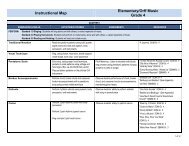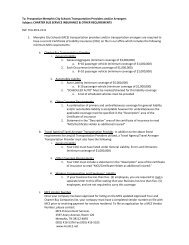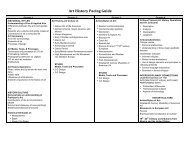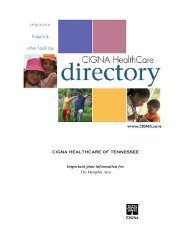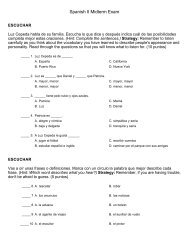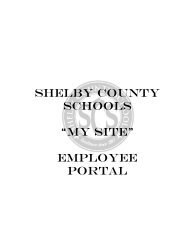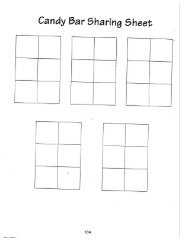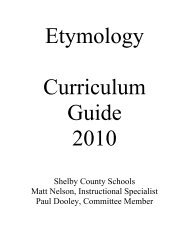Shelby County Schools June 2004
Shelby County Schools June 2004
Shelby County Schools June 2004
Create successful ePaper yourself
Turn your PDF publications into a flip-book with our unique Google optimized e-Paper software.
Introduction<br />
¡En Español! will help teachers integrate the National Standards, use technology to enhance<br />
instruction, address multiple learning styles, open students to new experiences and help students<br />
gain an appreciation of another culture. ¡En Español! consists of a preliminary chapter and six<br />
units; each unit consists of three etapas. Teachers need to realize that it is not crucial to do all the<br />
activities of the etapas to achieve the goals / objectives of each etapa. The teacher, as facilitator, will<br />
need to determine which activities to cover, taking in account the needs of every class.<br />
The teacher needs to remember that it is very important to give students opportunities to<br />
practice over and over again some of the critical concepts. For this reason, it is suggested that the<br />
students begin learning some of the hard concepts like gender, tenses, etc. at the beginning of each<br />
semester to ensure the students have the entire semester and, in some cases, a full year to practice<br />
the hard concepts. This textbook with all the visual aides, technology tools, art, recipes, games,<br />
projects, and supplemental materials will make teaching more enjoyable for the teacher and learning<br />
more enjoyable for the students.<br />
Rationale<br />
With the introduction of new textbooks, it is necessary to draft a new curriculum to<br />
correspond with the new text. The <strong>Shelby</strong> <strong>County</strong> Board of Education has adopted the McDougal<br />
Littell series ¡En español! for Spanish Levels I and II. The curriculum has been written in<br />
accordance with the national and state goals and standards for foreign language proposed by the<br />
American Council on the Teaching of Foreign Languages (ACTFL) and in accordance with the<br />
standards set forth by the American Association of Teachers of Spanish and Portuguese (AATSP)<br />
for the National Spanish Examination. The curriculum has been designed to be of use to the novice<br />
as well as veteran teacher. The acquisition of foreign language is a skill; therefore, the text and<br />
curriculum guide are designed to advance a proficiency-based method of learning. The curriculum<br />
guide is divided into two semesters with two nine-week periods in each semester. Suggestions for<br />
pacing, a scope and sequence, a curriculum map, and an outline are dealt with by nine-week periods<br />
in order to give the teacher a recommended stopping point for each semester. A suggested calendar<br />
has been offered to allow teachers time at the end of each semester to review prior to semester<br />
exams. Suggestions for assessment activities are addressed in a separate section. Assessment<br />
suggestions include examples of standardized semester exams. It is up to the teacher to decide<br />
which activities and which assessment items will work best for his/her students. However, it is<br />
highly recommended that teachers work within a school to standardize the curriculum as much as<br />
possible so all students receive the same skill acquisition at each level.<br />
<strong>Shelby</strong> <strong>County</strong> <strong>Schools</strong> Spanish II Curriculum Guide <strong>June</strong> <strong>2004</strong> Page 1



